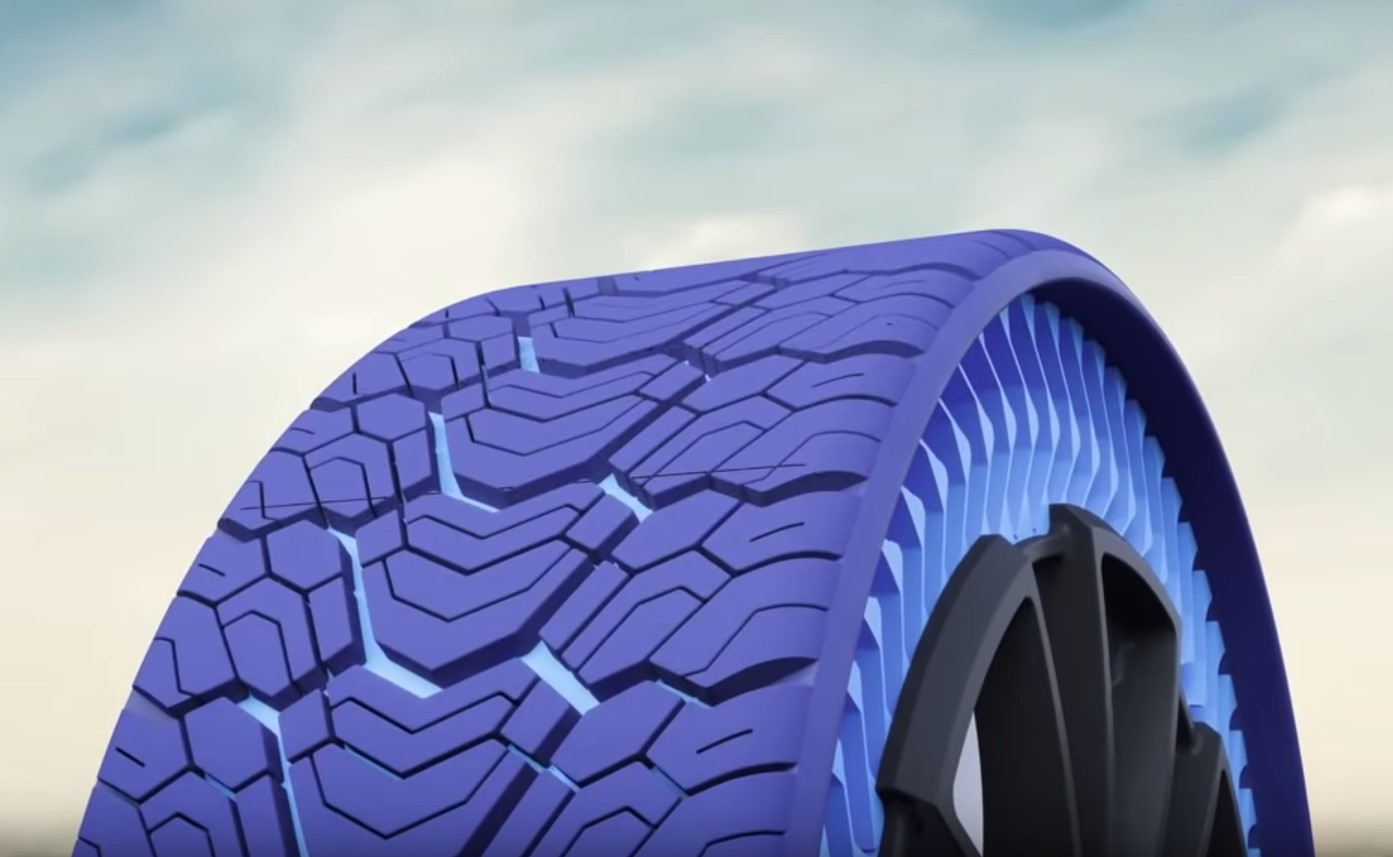Michelin Re-Introduces Puncture Proof Airless Tire
 |
| Michelin has refined the tire they prototyped years ago |
Michelin's new Unique Puncture-Proof Tire System (Uptis) does away with one of the defining aspects of tires as we've known them for more than 100 years: the air inside.
Unlike past attempts at airless tires, Uptis functions the way other modern tires do and, Michelin claims, will provide a similar driving experience.
Unveiled at the company's sustainable-mobility-focused Movin'On Summit in Montreal today, Uptis is a tire without a traditional sidewall that carries its load by the top thanks to a new resin-embedded fiberglass material that Michelin was granted over 50 patents for.
"The idea was to develop a technology that was strong enough to carry the load but light enough to replace the air," Cyrille Roget, technical and scientific communication director for the Michelin Group, told Car and Driver.
"If you have a load on the tire and you cut all the spokes at the bottom, you will see that nothing will change, demonstrating that the load is carried by the top of it, not by the under parts." Other airless tires, he said, often carry the load at the bottom of the tire, which is very inefficient and causes extra heating due to compression.
Uptis is not Michelin's first airless concept tire.
It builds on the Vision concept that was introduced at the 2017 summit meeting.
That concept had four main components: it was airless, connected, could be 3D printed (or have a rechargeable tread pattern), and was 100 percent sustainable.
Uptis tackles the first of those problems as part of what Roget called a "step by step" process to the tire of the future.
Michelin will test Uptis in the real world with General Motors.
GM will outfit a fleet of its Chevrolet Bolt EV hatchbacks with the concept tires for road tests in Michigan later this year.
Both companies said Uptis-style tires could be found on production passenger vehicles as early as 2024.
"We're focusing initially on electric vehicles because we think it fits very well with the zero-zero-zero vision," said Steven Kiefer, senior vice president of global purchasing and supply chain at General Motors, referring to the company's "zero crashes, zero emissions, zero congestion" mission.
"The Bolt EV and our next-generation BEV are really the platform for that, so it's the logical first place." The Uptis concept tires have a maximum speed of 130 miles per hour and a max load of 1102 pounds.
Different versions with different specs and driving characteristics will be possible, Roget said.
That's the kind of work Michelin will do with GM to figure out the right structure and number of spokes, which type of rubber to put on the outside, and how to embed the fiberglass in the tire depending on the vehicle application.
No matter how the Uptis ends up, it will be more stable than other tires, he said.
"Whatever the temperature, the profile of the tire will be exactly the same," Kiefer said.
"So it's a very stable solution.
No pressure check, no pressure adjustment." Theoretically, the tread life for the Uptis is the same as a standard tire, Roget said, but in the real world it will be longer because drivers who use it will not be driving around on improperly inflated tires.
"You always have the right pressure, so the tire will have a longer life," he said.
